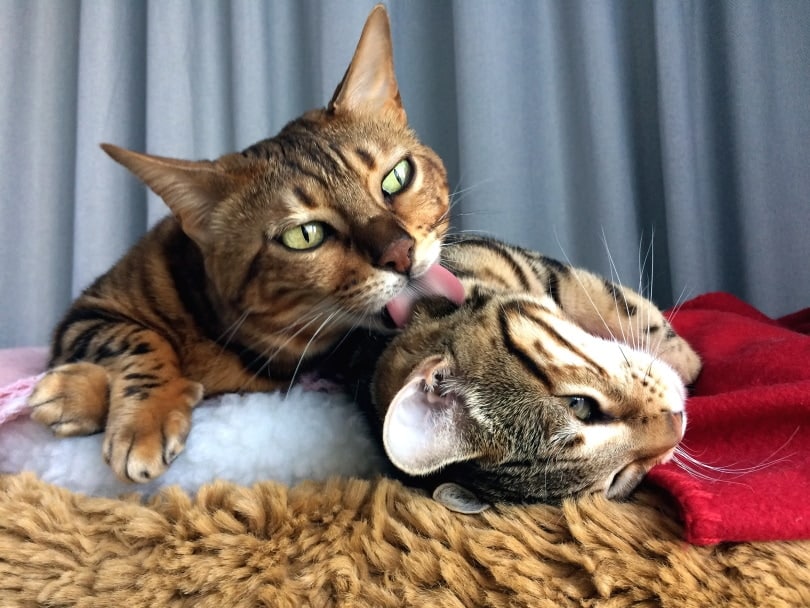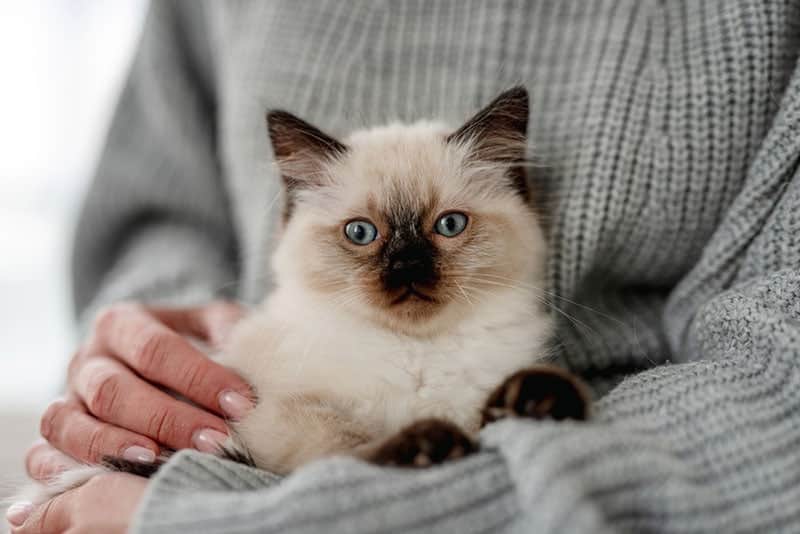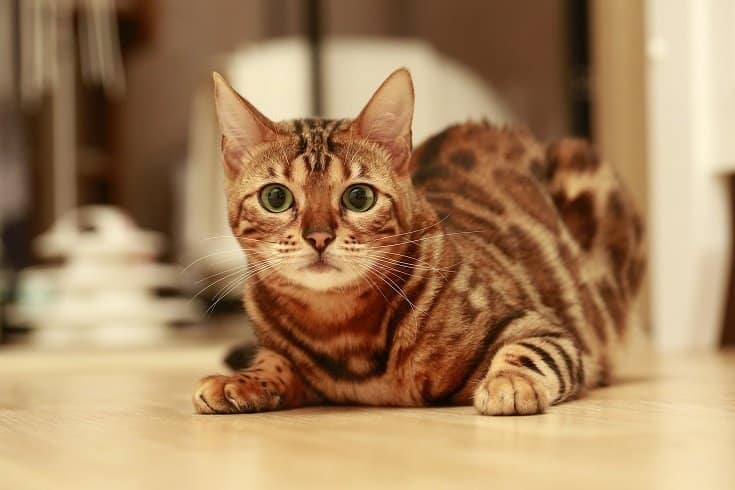Here at Catster, we take our cat cuddles very seriously, and if you want a cat who will cuddle you all night, we can help you find one! After all, who wants to settle down after a long day at work only to be ignored? Luckily Bengals tend to be pretty cuddly, with a catch: you have to be able to keep up with their high energy throughout the day.
Keeping up with your Bengal’s energy needs is easier said than done since they have a wild ancestor and the energy to match. If you aren’t careful about keeping your Bengal occupied, you’ll have a cat bouncing off the walls at all hours of the night.

How Cuddly Are Bengal Cats Compared to Other Cats?
Some Bengals like to cuddle, but their energetic nature prevents them from sitting still for long. While they need a lot of attention, they are hyper and don’t like to cuddle as long as other affectionate breeds. They would rather play with you than cuddle for hours.
That doesn’t mean they’ll never come after you for a cuddle, but it will be more rewarding since Bengals spend most of their time running, jumping, and climbing. They’re affectionate cats and prefer to be close to their owners all day, but they’re not interested in curling up in your lap as much as hyper-cuddlers like the Ragdoll.
It doesn’t mean your Bengal loves you less than the other cats; they just show their love differently.

Do Bengal Cats Get Attached to Their Owners?
Bengal cats may be playful more than cuddly, but they develop a strong bond with their owners. Bengals are very affectionate and become very attached to their families. Bengals have a relatively high rate of separation anxiety when compared to other cats. Bengals are also known for experiencing jealousy regarding their favorite people.
If your Bengal feels ignored, left out, or like you’re giving another person or pet more attention than they get, they might begin to act out for attention. This can be frustrating for cat parents who have to clean up after their Bengal cat’s tantrums. However, the behavior is generally pretty easy to handle by giving your Bengal extra attention before or after a visit from a new person.
How to Encourage Your Bengal to Cuddle
You probably won’t be able to turn your Bengal into a lap cat. They have too much energy, and their prey drives are too high to coincide with a life of lazing around. However, you can train them to perform tricks, and you may be able to encourage them to cuddle with you when they’re ready.
- Getting your Bengal to cuddle with you starts by speaking their language first. They’re more likely to settle down after a spirited play session, but be warned, it could take a while! Bengals have an energy level that mirrors modern-day wild cats, and they can play games much longer than most breeds.
- You can exercise your pet with a teaser wand or play fetch with a stuffed mouse. Bengals love it when their owners participate in their games, and they prefer activities that allow them to run and pounce. Not only does this prepare your Bengal for relaxation and cuddles, but it also helps you bond with them on their terms instead of yours. Relationships should be based on a give-and-take system, even with animals. So, if you want your Bengal to humor you and cuddle for a while, be ready to play with them because that’s the trade-off!
- Once you see your Bengal getting tired, it’s time to invite them up onto your sofa for snuggles. It’s unlikely that most Bengals will become true lap-cats. It’s most likely going to be a trade-off of playtime and cuddling.
- If your Bengal gets another burst of energy or the dreaded zoomies while cuddling, let them get the energy out before inviting them back for more cuddles. This will ensure that they’re as comfortable as can be while cuddling and help them build positive experiences with snuggling.
- Additionally, if your Bengal is allowed to sleep in bed with you, it is the prime time for snuggling. Bengals will most likely want to snuggle when it’s time to sleep, especially when everyone in the house is going to bed. This is especially true if you exercise your Bengal enough during the day. Your Bengal should be all tuckered out and ready for a cuddle session by the end of the day.
What Cats Are More Affectionate Than Bengals?
Since Bengals are on the lower end of the cuddliness, some cats are more cuddly than they are. Here are the lap cats known for their cuddly and affectionate natures.
Ragdolls

Ragdolls are hailed as one of the cuddliest cats you can get. The name ‘ragdoll’ comes from the breed’s tendency to go lax like a doll when picked up. Ragdolls don’t have the same wild prey drives and energy levels as Bengals.
Siamese Cats

Siamese cats are also known for their vocal and affectionate tendencies. They’re more playful than Ragdolls and have more energy, making them a perfect choice for anyone who wants an in-between between the Ragdoll and Bengal dispositions.
Final Thoughts
Bengals might be trendy, but that doesn’t mean they’re the perfect breed for every owner. If you prefer a more relaxed lap cat, you probably want to go with a different breed. There are plenty of cats that are cuddly and huggable. So, there’s no need to try and jam a square peg into a round hole!
- See Also: Do Bengal Cats Shed?
Featured Image Credit: lshman000, Pixabay











